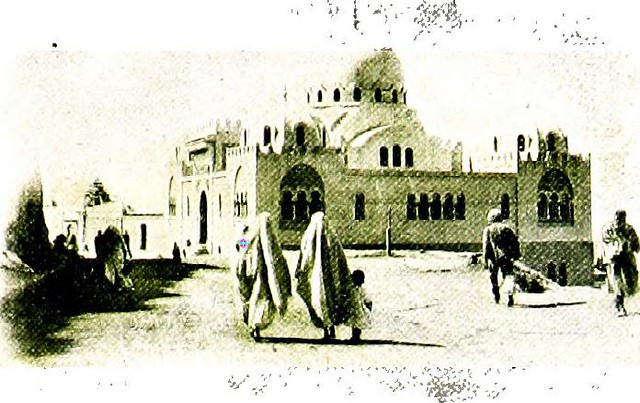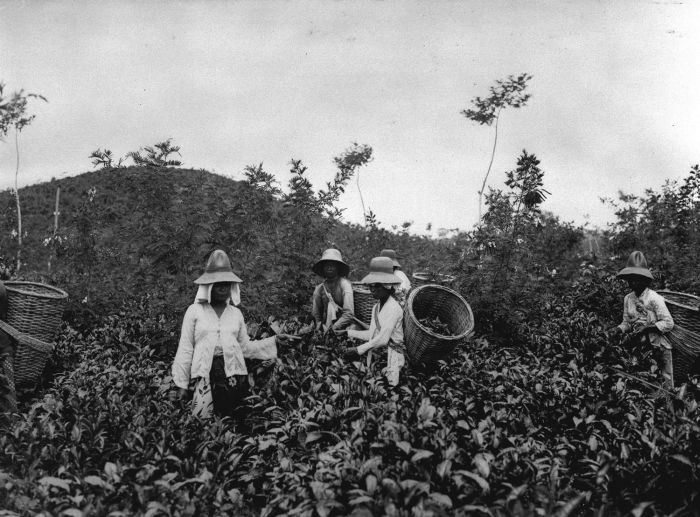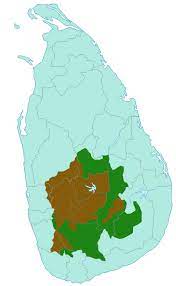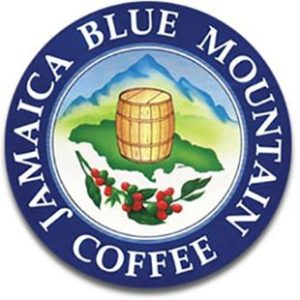The island of Sumatra is the 6th largest island in the world. As one of Indonesia's many islands, it is home to 50 million people.
Together with the islands of Java and Borneo, they form the majority of Indonesia.
It features some of the world's lushest rainforests, and is home to many endangered animals like
- Orangutan
- Sumatran rhino
- Sumatran elephant
Did you know
While Indonesia isn't often thought of for its coffee, I'm here to show you that this country, and specifically the island of Sumatra, has some incredible coffee beans.
Did You Know? Sumatran coffee has a signature taste that can't be found anywhere else.
The island of Sumatra lies right on the equator, so it's smack dab in the middle of the world's coffee growing belt. The warm and humid weather in all months of the year help make it one of the best growing locations in the world.
The equatorial location combined with the altitudes of the Sumatran highlands are a winning combination.
Indonesia has one of the oldest and richest coffee histories in the world, and has premium beans to show for it. Ever wondered why a cup of coffee sometimes goes by the name "Java"? In the 1800s, most of the world's coffee was from Indonesia.
Bags of coffee exported from the island of Java were labeled as Java. It didn't take long for this nickname of Java to stick.

Even though in the 1800s Java may have been the big coffee bean exporter, things have changed.
Did You Know? Now, Sumatra is a coffee producing powerhouse. This island alone produces almost 75% of Indonesian coffee.
Have you tried Sumatran coffee before? If not, I hope to convince you that it's worth the try.
The lush growing conditions and special wet processing method create a rich full body coffee. It's no wonder even Starbucks loves Sumatran coffees and offers a Sumatran roast.
It's signature low acidity has earned it worldwide fame in the coffee world.
Given that one of the top coffee brands is in love with these beans, you're going to want to give them a try.
A Brief History of Sumatran coffee
During the 1600s, the coffee industry was a monopoly controlled by Arab merchants. Europeans' love for coffee was only increasing, and so was the demand for coffee.
The Dutch were looking for a way to break the coffee monopoly, and sent coffee plants to Indonesia near the end of the 1600s. They hoped to find suitable coffee growing conditions among the lush Indonesian islands.
The first growing experiments of coffee in Indonesia were on the island of Java, near the city of Jakarta.
These experiments turned out to be a success, and enough Arabica coffee plants took hold to begin exporting some of the green coffee beans by 1711.
Coffee production spread to other Indonesian islands, notably the Sumatra and Sulawesi islands.
It wasn't long before Indonesia rose to become the third largest producer of coffee. Large plantations were created on Sumatra to keep up with the global coffee demands.

Disaster struck at the end of the 1800s. Leaf rust disease, a disease that affects coffee plants, struck Indonesia. This epidemic decimated the coffee plantations across the Indonesian islands, including Sumatra.
Some farmers gave up on coffee and turned to growing rubber and tea. However, the Dutch government knew how profitable the growing global coffee market could be, and brought in the Liberica variety of coffee to the islands.
This plan failed miserably, as the Liberica plants turned out to be vulnerable to leaf rust disease.
Knowing that the Robusta variety is pest-resistant, they brought in Robusta coffee plants to the region.
Luckily, the Robusta plants took hold and thrived despite the leaf rust disease.
Even today, 75% of Sumatra coffee is Robusta, and is mostly grown in the southern regions of the island.
Robusta is known as a lower quality coffee, with a bold and bitter flavor with a high caffeine content.
Indonesia is a powerhouse when it comes to growing coffees. Today, it is the world's 4th largest producer of coffee beans.
Where is Sumatran coffee grown?
You may have heard of the premium Arabica coffee produced in Sumatra as Mandheling coffee. This coffee is grown in two main regions of northern Sumatra.
The Aceh region is the northernmost region of Sumatra, and is known for lush jungle and rich soil. The Lintong region, which includes the famous Lake Toba, is the other region that produces what is known as Mandheling coffee.
These are known as the best Sumatra coffees.
Lake Toba is the largest volcanic lake in the world. The beans grown hear soak up the rich minerals from the volcanic soil. It's also one of the most popular tourist destinations on the island.
Robusta coffee is grown in the southern regions of Sumatra. Even though Robusta production makes up much of the island's exports, it doesn't have much of a reputation.
When most people think of Sumatra coffee, they think of premium Sumatra Mandheling coffee.
This Mandheling coffee has lower caffeine levels than the Sumatran Robusta coffee beans.
The Robusta beans produced in Sumatra are inexpensive and often used as filler in a blend. The Sumatra coffee purchased by Starbucks is all premium Arabica beans.

Small farmers in the Aceh and Lintong regions joined together to create co-operatives.
With the support and resources of a cooperative, many of the farmers have been able to get their coffee beans certified organic and fair trade.
Some of the coffee produced by these co-operatives are considered single-origin.
This is because they can be traced back to the region they were grown, thanks to the steps they go through to be certified. This helps ensure the quality of the beans.
If you're looking specifically for fair trade coffee, look into the Gayo Organic Coffee Farmers Association. The Gayo co-operative is Indonesia's first and only co-operative that produces certified fair trade beans. It's also 100% certified organic.
The Gayo beans are grown at a high altitude in the mountains of the island, and are known to make an excellent espresso.
As a consumer, single origin and certified coffee help you know you're buying a high quality bag of beans.
There are many co-operatives in this region of Mandheling, including women-lead co-operatives that help support local women with their coffee farms.
Wet Hulling Method
Wet hulling gives Sumatra coffee beans their unique low acidity.
Sumatran coffees are prepared using a signature wet hulling method called Giling Basah to process the beans.
This wet hulling method helps give Sumatran coffee beans their full body and low acidity, with muted notes.
First, the coffee cherries are picked and the skins of the cherries are removed. The beans are then left to ferment overnight, before the remaining cherry fruit is removed from the beans the next morning.
The coffee beans are then left out to dry on parchment. However, this method doesn't let them dry out like in a typical dry processed method, so the beans stay moist for longer.
After drying out on the parchment, the beans are then shipped to warehouses where they are further dried without parchment before going to the roasters or being exported as green beans.
So what makes this wet hulling processing unique? Because Indonesia is so humid, the wet processing method works well in this climate because the beans are meant to retain moisture for more time than in a typical dry processed coffee.
This causes light fruity notes to become muted, and brings out a complex earthy flavor to the coffee.
This wet hulling process also brings out a full and rich body, and it has very low acidity levels.
Did You Know? The low acidity may be what Sumatran coffee is most well known for.
And of course we can't forget about the "unique" processing that goes into the Kopi Lewak brand of coffee.
The processing method for this brand makes it one of the most expensive coffees in the world.
Kopi Luwak Coffee: Wild Gathered

Pros
The digested coffee cherries are then harvested from the civet feces. Some described it as having mushroom-like notes. As you can imagine, these civet cats are by no means mass producing this special kind of coffee.
You may need to search for them; these beans are super rare and can sell for $800 USD per kilogram.
While some say this is the best coffee in Sumatra, it is definitely an acquired taste.
What does Sumatran Coffee Taste Like?
The flavor profile of a cup of Sumatran coffee is a bit different than your typical Arabica coffee. The tasting notes of a Sumatra Mandheling coffee are often earthy, wild, a bit spicy, and with lingering notes of chocolate.
The flavor has sometimes even been described as mushroomy. While this may be a bit of a change from typical Arabica flavors of bright and bold floral aromas, it does make for a unique flavor.
Thanks to the Giling Basah processing method, this coffee is full and rich, which is why it's known to make a great espresso.
The acidity levels are low, but still present enough to bring out the fresh flavors.
Sumatran beans are often found as a dark roast coffee. The Sumatra coffee Starbucks offers comes as a dark roast, with earthy and herbal tasting notes.
If you're used to the bold flavors that a dark roast brings, you'll really enjoy Starbucks Sumatra coffee.
The dark roast is best known for bringing out a sweet flavor to the coffee with chocolate notes.
Most bags of Sumatra coffee are dark roast for this reason.

You can also find Sumatran coffee as a medium roast as well.
A medium roast coffee will still bring out the nuanced spice of the coffee beans, though if you're a dark roast fan, you may not find the coffee flavor as strong as you would prefer.
Lightly roasted beans bring out more complex herbal and earthy flavors than a darker roast would. It doesn't have the chocolate hint of the dark roast.
The lighter roast isn't as readily available as the dark roast, but if you want a new flavor profile with the same beans, it's worth a try.
How to Prepare Sumatran Coffees
You can by the Sumatra Starbucks coffee beans either ground or as whole beans. While they're great either way, I'd always recommend grinding the roasted beans yourself as the best way to achieve a fresh flavor.
That way, you get fresh ground coffee every time you want a cup.
Sumatra coffee beans tend to be used for espresso. The coffee's rich and smooth body become even thicker in espresso, creating the iconic drink you'll love.
A Sumatra coffee bean is also great has a cold brew. If it's a hot day and you'd rather have a cold drink than a warm one, a cold brew using a French press is a favorite.
Less acidity means this brew has a very smooth feel. If you're a fan of cold brew, put Sumatran beans at the top of your list.
Sumatran coffees are suited for a variety of brewing methods. You can even try roasting the beans yourself if you're feeling adventurous.
The green beans are quite forgiving, so if it's your first go of roasting, these beans are beginner friendly.
There are many resources online that can guide you through roasting your own beans.
FINAL THOUGHTS
Sumatra Mandheling coffee is one of the world's best.
Whether you're a fan of dark roasted coffees or prefer a medium roast, the complex earthy flavors and low acidity of Sumatra coffees are sure to make for a unique brew.
There are so many options to purchase certified organic or fair trade beans directly from the co-operatives themselves, so your search for high quality coffees is easy.
With options of whole bean or ground, dark roast or medium, you're sure to find a favorite.
